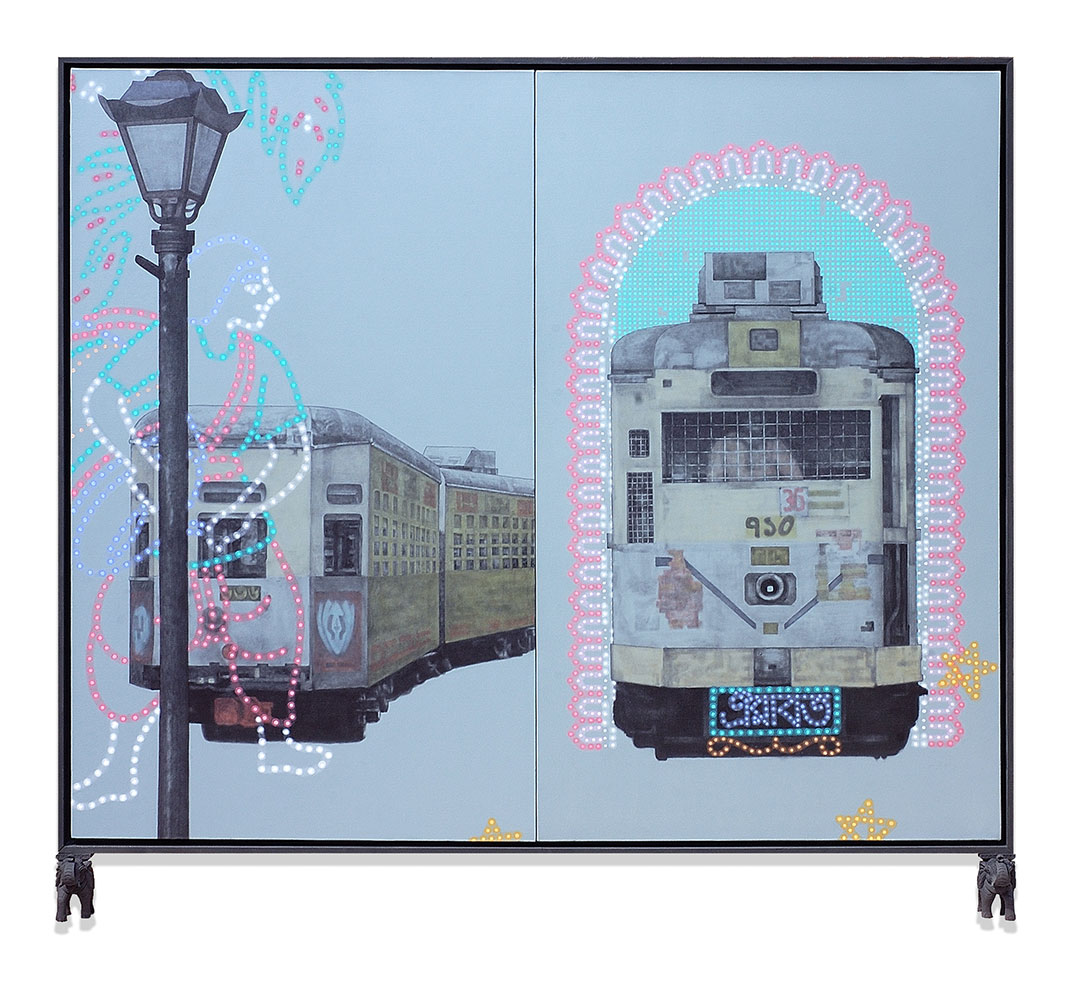Muktinath Mondal uses public culture to portray living conditions, faith, spiritual beliefs, means of communication and livelihood in his works. He has a propensity to document his works and then use various concerns relating to that of public ethnicity, customs and their various demonstrations.
The artist mixes the new and the old and plays with the conflicts of modernity and tradition to provoke thought. His 'Satyavahana Series' refers to this idea using 'pithoro toys' within the scheme of a landscape and calling these ancestors, protectors of the 'Saviours'. He uses direct and indirect speech to express his thoughts and subject matter, playing a balancing act between contentment and regret. Superstition can also make up the concept of what we visualize as public culture. In the 'Spirit of Anticipation' series the artist gave a lot of attention to spiritual beliefs and the commodities that they use.
Besides glorifying everyday people, Mondal uses objects metaphorically in his paintings to epitomize the debarred, that are still considered bleak, desolate, helpless and are constantly struggling for survival. He paints portraits of street children named after famous freedom fighters, in the 'The Great Indian Folklore' which celebrates this grand hopes of India.

